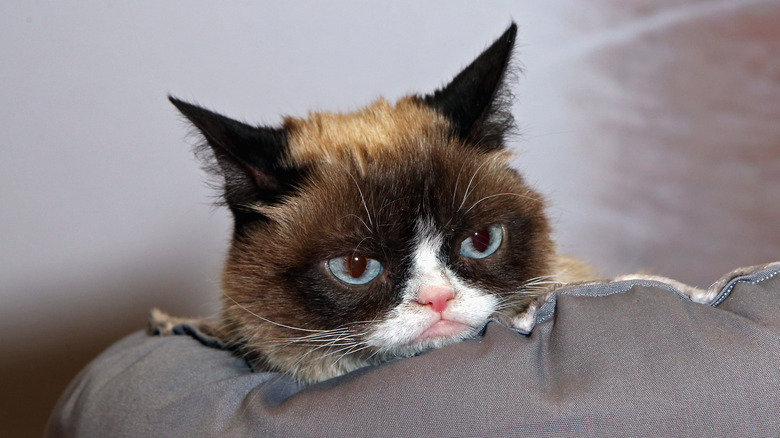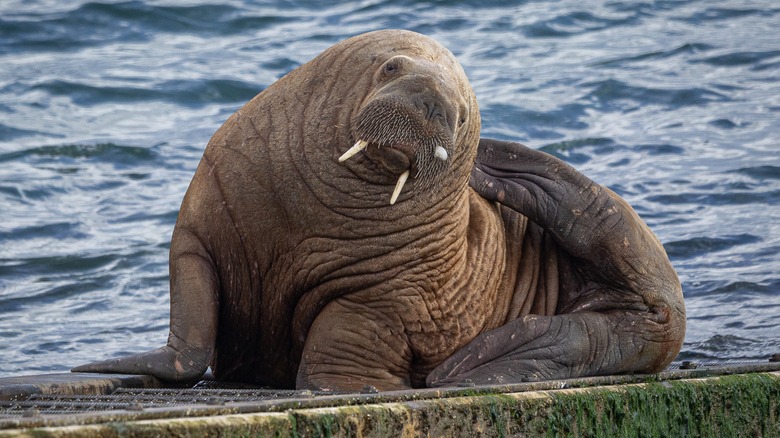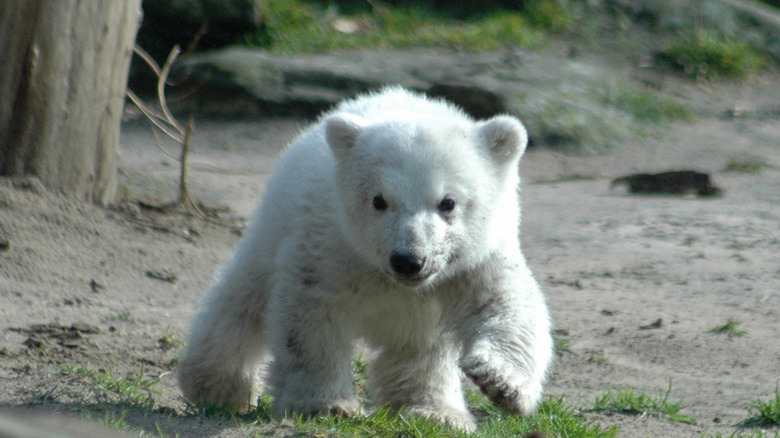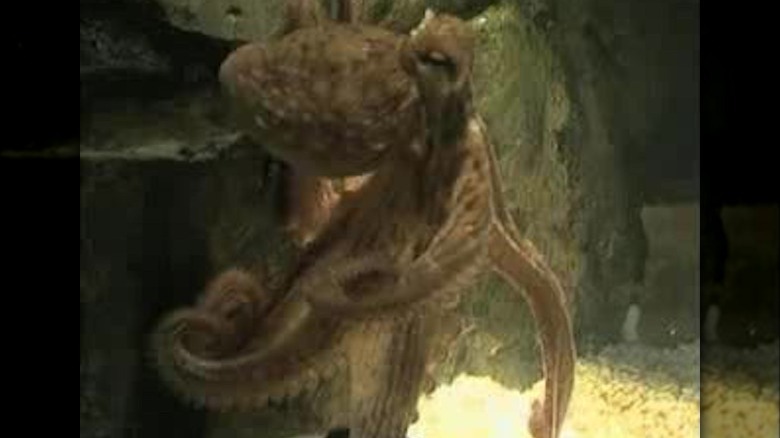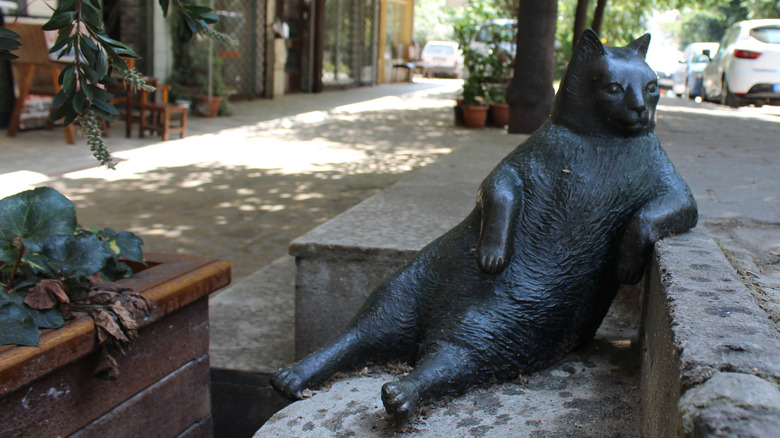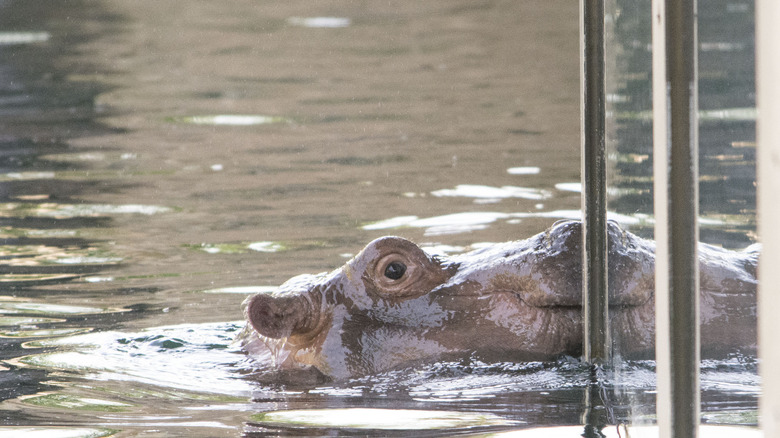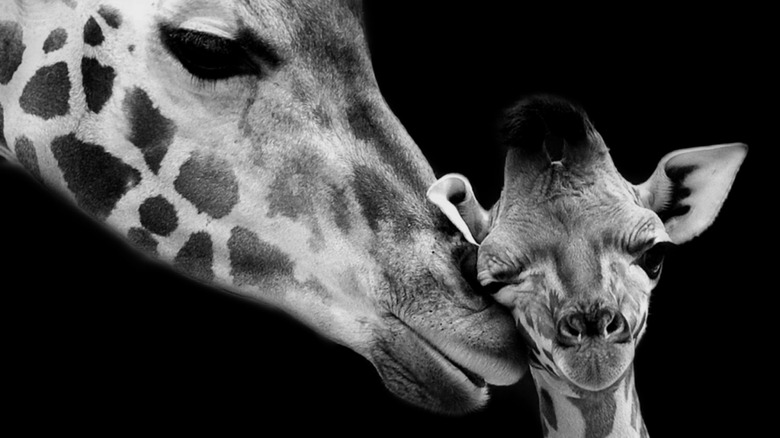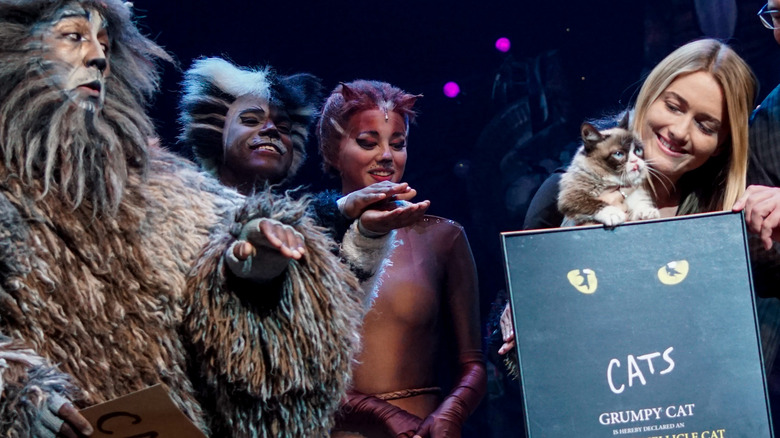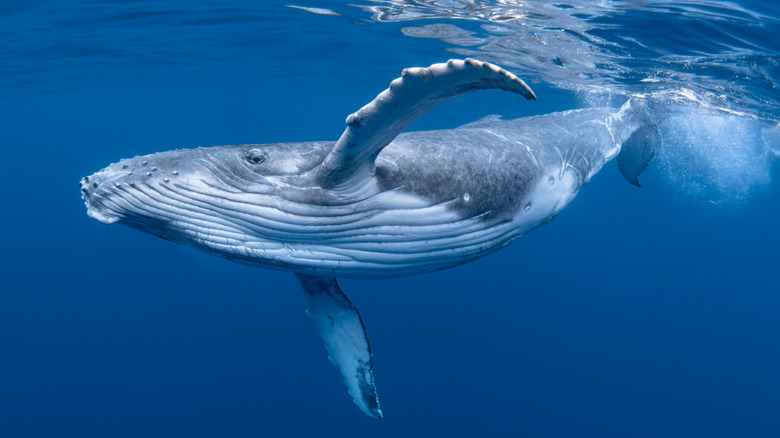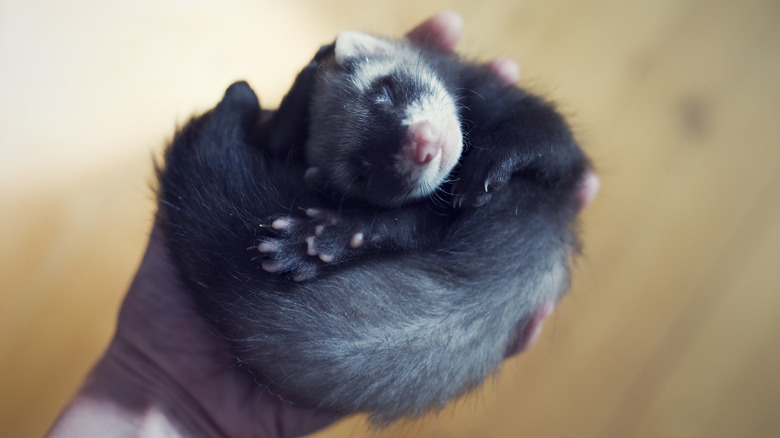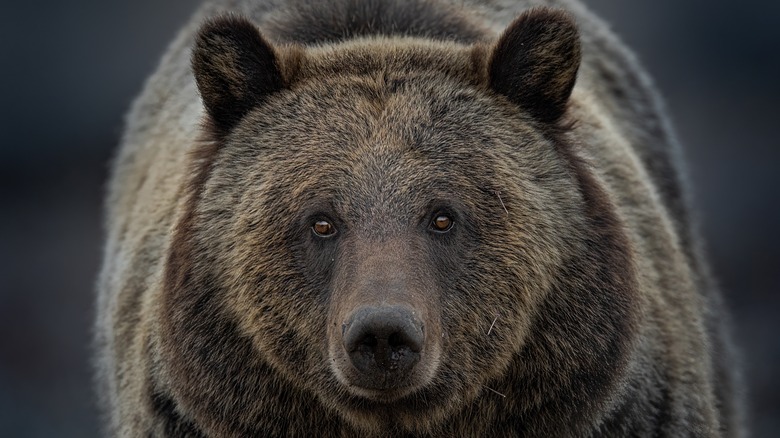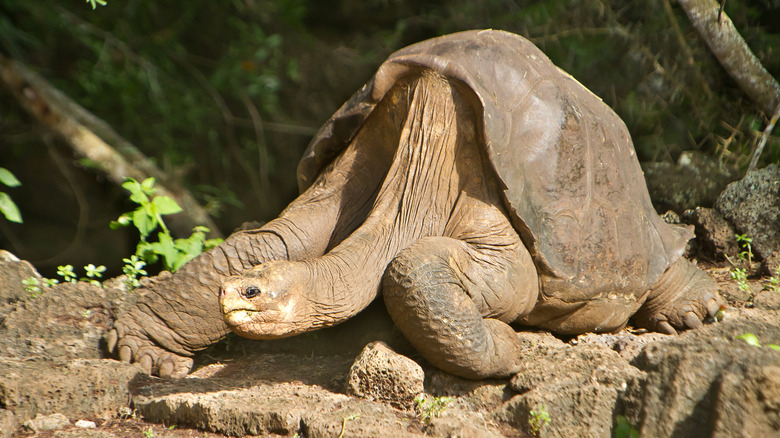Animals That Made Headlines Overnight
Animals have a special penchant for stardom, sometimes capturing fans overnight. Whether they are cute, funny, or majestic, humans often find appreciation for them and sometimes even rally for their rights or safety.
Cats are the absolute winners when it comes to online devotion, inspiring memes, TV shows, and even statues — just look at Grumpy Cat and Tombili. Bears frequently find their way into people's hearts but fight ongoing battles with freaked-out local communities, worried about their safety. Some animals, like Lonesome George and the 52-hertz whale, attract attention for their uniqueness, while others display admirable skills, like Paul the Octopus, who knew how to correctly predict soccer match results. Others are loved for their beauty, like giraffe Omo, or their quirkiness, like Fiona the hippo. Some are even clones, like Elizabeth Ann the ferret, an exact copy of Willa, who died sometime in the 1980s.
Without further ado, here are some animals that made headlines overnight.
Wally the Walrus
Wally reached fame during 2021 when he was traveling around the U.K. and Atlantic Europe while Europeans were gloomily locked away in quarantine. As reported by The Guardian, Wally was first spotted mid-March in Ireland before he swam to South Wales, hanging around Tenby town beach and entertaining the visitors. Soon, he headed out to Cornwall, reaching France by June. He even visited Bilbao in Spain before he returned back to England, spending August days on the Irish coast. He was nowhere to be seen after, worrying many he got into trouble. But Icelandic fishermen confirmed the happy news — Wally had traveled all the way to Iceland and settled there for a while.
As per Independent.ie, Sea Life Rescue Ireland explained that Wally was resting in Iceland on his way to the Arctic, where other walruses reside. It is believed he was born in Svalbard in northern Norway and fell asleep on a sheet of ice, waking up alone, far away from home. Wally is a young male walrus, and it's unusual for an animal of this kind to be on its own.
Wally had several adventures on his journey, worrying and entertaining his many followers. Notably, one unfortunate meeting with a boat left him a little hurt and a bit overwhelmed. And during his time in Tenby, the local authorities had to contain the masses harassing poor Wally on jet skis, paddleboards, and other sea sport equipment (via the BBC).
Polar bear Knut
Four-month-old polar bear Knut charmed the public as soon as his first images circled the media in March 2007. His mother, a former circus performer from East Germany, rejected him at birth along with his twin brother, who died soon after (per ABC News). Knut was raised by zookeeper Thomas Doerflein, who hand fed the cub to his maturity.
But Knut didn't live long, dying in front of horrified Berlin Zoo visitors only four years later. Many complained Knut wasn't living well, as his living space was far too small for a polar bear: "We have been after this zoo ever since they made Knut a tourist attraction to his detriment," complained Ingrid Newkirk, the president of PETA. Some scientists believed hand-feeding a bear is not the right choice, and Knut did have trouble connecting with other bears. Others thought Knut became addicted to attention from the public, displaying disappointment when he didn't get enough praise. He also developed panic attacks and exhibited several unusual behaviors, looking like he was in distress.
An autopsy revealed that Knut died from encephalitis, brain swelling caused by a virus, which led him to have a seizure, as seen by the public (via Live Science). Bear curator and biologist Heiner Klös, who works at the Berlin Zoo, claimed Knut did not die for suspicious reasons: "We are absolutely sure there was no stress and no heart attack, and no broken heart, if it's possible to find something like this."
Psychic Octopus Paul
Paul the octopus reached worldwide fame in 2010 when he correctly predicted game results during the soccer World Cup championship in South Africa. But according to the Oberhausen Sea Life Aquarium staff, he had some practice, successfully predicting 70% of the results during the soccer European Championship in 2008 (via the BBC). The prediction process was simple: two closed jars with a snack, usually a mussel, and Paul, all together in an aquarium. One jar had a German flag, and the other a flag of the opponent team; the jar Paul chose was the flag of the predicted winning team.
Paul's best period was the World Cup in 2010 when he was successful in all of his eight predictions (via SBS News). The oracle octopus, as he was called, became a sensation, which immediately attracted the haters. The U.K. press accused him of disloyalty to his home country (Paul was born in the U.K.), while German fans warned that he would end up as sushi. In fact, death threats were a regular thing, with Spanish Prime Minister Jose Luiz Rodriguez Zapatero and Industry Minister Miguel Sebastian intervening and suggesting bodyguards. Nevertheless, it appears all the stress of professional soccer was too much for Paul, who passed away overnight in 2010.
Turkish cat Tombili
Maybe you've come across a meme depicting a house cat lazily chilling on a bench, indifferently monitoring the street. This is Tombili, a cat who lived in the cat capital of the world, Istanbul (via The Independent). Tombili got his name after a Turkish expression for plump pets and was often seen around the Ziverbey area in Kadıköy district. He often ignored those who wanted to pet him, which is not surprising, him being a cat and all. But in the summer of 2016, Tombili got sick and died a month later, causing grief all over the neighborhood.
The residents wanted to have a lasting memory of the feline, so an online petition was set up tp gather signatures for an official request directed to the Kadıköy Municipality itself. After 17,000 people signed the petition demanding a Tombili statue, local artist Seval Şahin created a sculpture, which was revealed in October 2016 by Kadıköy deputy mayor Başar Necipoğlu.
Fiona the Hippo
Fiona was a fighter right from her birth. Born to Henry from Dickerson Park Zoo in Missouri, and Bibi, who came from St. Louis Zoo, Fiona came six weeks too early (via National Geographic). She was so small and fragile that the staff at the Cincinnati Zoo thought she might die. But she had support, as the team worked night and day to keep her alive, using every possible method they had at hand, even plugging her into oxygen tubes to help her lungs fully develop. After three months, she was strong enough to be reunited with her parents (first with Bibi, and soon after with Henry as well, all under the careful supervision of the staff).
The bond between the hippo family did not break — after Henry's premature death, Fiona and Bibi are inseparable. But it's not just the touching story or Fiona's cute appearance that turned thousands to follow Fionamania. As declared by The New York Times, Fiona has quite the personality and sense of humor, too, as she showed when photobombing visitors' engagement photos.
Omo the White Giraffe
Forget about unicorns — picture a white giraffe named Omo, a young female living in Tarangire National Park, Tanzania, who was discovered in 2015. She is not an albino giraffe but has leucism, a condition that prevents her skin from forming melanin (via CNN). Leucism makes her almost snow-white (apart from neck hair and a few subtle spots), and this can cause problems. She has no camouflage when running around the savannah and is an easy target for other animals as well as poachers, who are always on the hunt for trophies.
Many wondered how Omo's whiteness was accepted by other animals, as explained by ecologist Dr. Derek Lee, the researcher who works in Tarangire National Park: "I think people love the fact that Omo the white giraffe was accepted by her more typically colored peers, because it speaks to the human aspiration of tolerance and acceptance of those who look different and are not normal."
Omo is not unique, as three other white giraffes were spotted in eastern Kenya in 2017 (via HuffPost). But two of them are already gone — a mother and her calf were killed in 2020. In fact, giraffes, in general, are becoming rarer and rarer, with less than 80,000 left in the wild.
Grumpy Cat
If Tombili became instantly famous due to his lazy posture, Tardar Sauce charmed the masses with her grumpiness — a feeling many can relate to. The blue-eyed kitten was born with dwarfism and an underbite, which made her look perpetually grumpy. A picture of her got posted to a Reddit page in 2012, and the online community instantly created a meme out of it (per TIME).
The Grumpy Cat meme is one of the trendiest memes in history. Tardar Sauce and her owner Tabatha Bundesen visited several TV shows, including "American Idol," while Tardar Sauce even appeared in her own movie in 2014, titled "Grumpy Cat's Worst Christmas Ever." She became the face of Friskies cat food and launched a T-shirt line. Her number of followers was immense, with 8.5 million likes on Facebook, 2.4 million Instagram followers, 1.5 million Twitter followers (via TIME).
Grumpy Cat's most notable performance by far was her participation in the Broadway Cats musical, where she hit the stage (only for a few minutes!) as an honorary member of the Jellicle cats crew. She wasn't amused (per My Modern Met): "Being selected as the first real cat to perform in Cats on Broadway is an honor. I hate it," she stated in the press release.
Tardar Sauce passed away in 2019 after a complicated case of urinary infection: "Her spirit will continue to live on through her fans everywhere," Tabatha published on Grumpy Cat's official Twitter account.
52-Hertz Whale
People often feel misunderstood, but that seemed to be a fate for the 52-hertz whale, whose frequency — the main means of communication if you are a whale — was completely off. His underwater calls were first documented in 1989 when the U.S. Navy was tracking Soviet submarines (via Mental Floss). Soon after, Joe George, a Navy technician, contacted William A. Watkins, a marine mammal bioacoustics scientist. Watkins and his team from the Woods Hole Oceanographic Institution followed and recorded the whale year after year, always between August and February. In 2004, a study published in Deep Sea Research Part I: Oceanographic Research Papers confirmed that the 52-hertz frequency really did come from a whale (most whales usually communicate at frequencies between 10 and 39 hertz or 20 to 40 hertz, not higher).
The story about the lonely whale touched numerous people who identified with feelings of loneliness and detachment. Some wrote songs and literary stories, while others created plastic sculptures, instrumental albums, and documentary movies (via Atavist). But several critics disagreed with the idea that the whale is lonely. Researcher Christopher Willes Clark says 52-hertz frequency is not that unique (per Smithsonian Magazine): "The animal's singing has a lot of the same features of a typical blue whale song. Blue whales, fin whales, and humpback whales: all these whales can hear this guy, they're not deaf. He's just odd." Others think that the frequencies Watkins picked up could belong to different animals, not just one.
Elizabeth Ann the Ferret
Elizabeth Ann is a black-footed ferret, a species that was thought to be extinct in the 1970s, but as it turned out a few years later, a small number of the population did survive — seven in total (via CPR News). Today, there are around 500 black-footed ferrets in North America, but due to low genetic diversity, they can only survive with the help of medical interventions, such as vaccinations and insecticides.
For that reason, Elizabeth Ann was created — to diversify the gene pool and help the black-footed ferrets become healthier. Frozen Zoo in San Diego kept DNA cryopreserved animal tissue samples of the ferrets they found in the early 1980s, and one of them was Willa. With the help of Revive & Restore organization, this sample was sent to ViaGen Pets, where they transformed the material into embryos. One was implanted into a domestic ferret animal, and Elizabeth Ann was born.
But she will not be the only clone — there are more identical black-foot ferrets on the way. When they arrive, they will all live in the National Black-footed Ferret Conservation Center in Fort Collins, Colorado. The conservationists hope they will be able to clone another DNA sample and create a male ferret this time. This way, Elizabeth Ann could reproduce with the clone of an animal existing at the same time as Willa, producing a brand-new set of baby ferrets. They would be then released into the wild, where they would breed with the feral population.
Hank the Tank
Hank the Tank was unjustly accused of crime, probably due to his giant demeanor — he is a 500-pound bear, after all. After residents of the Tahoe Keys in Lake Tahoe, California, reported several break-ins in the summer and fall of 2021, all eyes turned to Hank the Tank (via CNN). The bear wandered around the streets and properties and was seen inside several houses. The reports of The South Lake Tahoe Police Department show there were 28 break-ins in the span of several months, with 33 homes severely damaged. No human or animal was harmed, but the local community did start to panic, as the bear had been seen at least 100 different times. The reason for the bear's huge appetite was hyperphagia, a natural state of preparing for the winter. The bear had lost his fear of people, similar to many bears across the world, as their natural habitat is getting smaller and smaller, so he searched for food in populated areas.
Some residents demanded the bear be euthanized or moved to facilities where they would lock him up. Others disagreed, stating that the bear was there first. But, as it turned out, Hank the Tank wasn't the only bear in the area — DNA research conducted by the California Department of Fish and Wildlife revealed there were at least three different animals. The department promised that no bear would be killed, but acknowledged that the bears do need to be caught, tagged, and managed better (via CNN).
Lonesome George
Lonesome George was the last surviving Pinta tortoise, an animal endemic to Galapagos Islands, specifically to the Pinta Island (via Galapagos Conservancy). The tortoise life in Galapagos wasn't easy for a while. All was well until the 1800s, when humans started to exploit Galapagos Islands and the ocean around it, quickly depleting local animal populations. Turtles almost went extinct but managed to survive — until the 1950s, when some fishermen left a few goats on the island. The goat population grew exponentially, feeding on everything, completely destroying the tortoise habitat. When Lonesome George was found in 1971, there was still some hope left that there was another Pinta tortoise. In all these years, it hasn't been found, and with Lonesome George's death in 2012, the Pinta tortoise species is officially extinct.
The over 100-year-old body of the Lonesome George can still be seen if one visits the American Museum of Natural History in New York City. Inhouse taxidermists worked for over a year to prepare Lonesome George's body for public display as a symbol of global conservation efforts: "George's story has played an important and inspirational role in the development of the next steps in tortoise conservation throughout the archipelago. We look forward to a new and important chapter in biodiversity protection," explained Galapagos Conservancy Science Advisor Dr. Linda Cayot (via Galapagos Conservancy).
